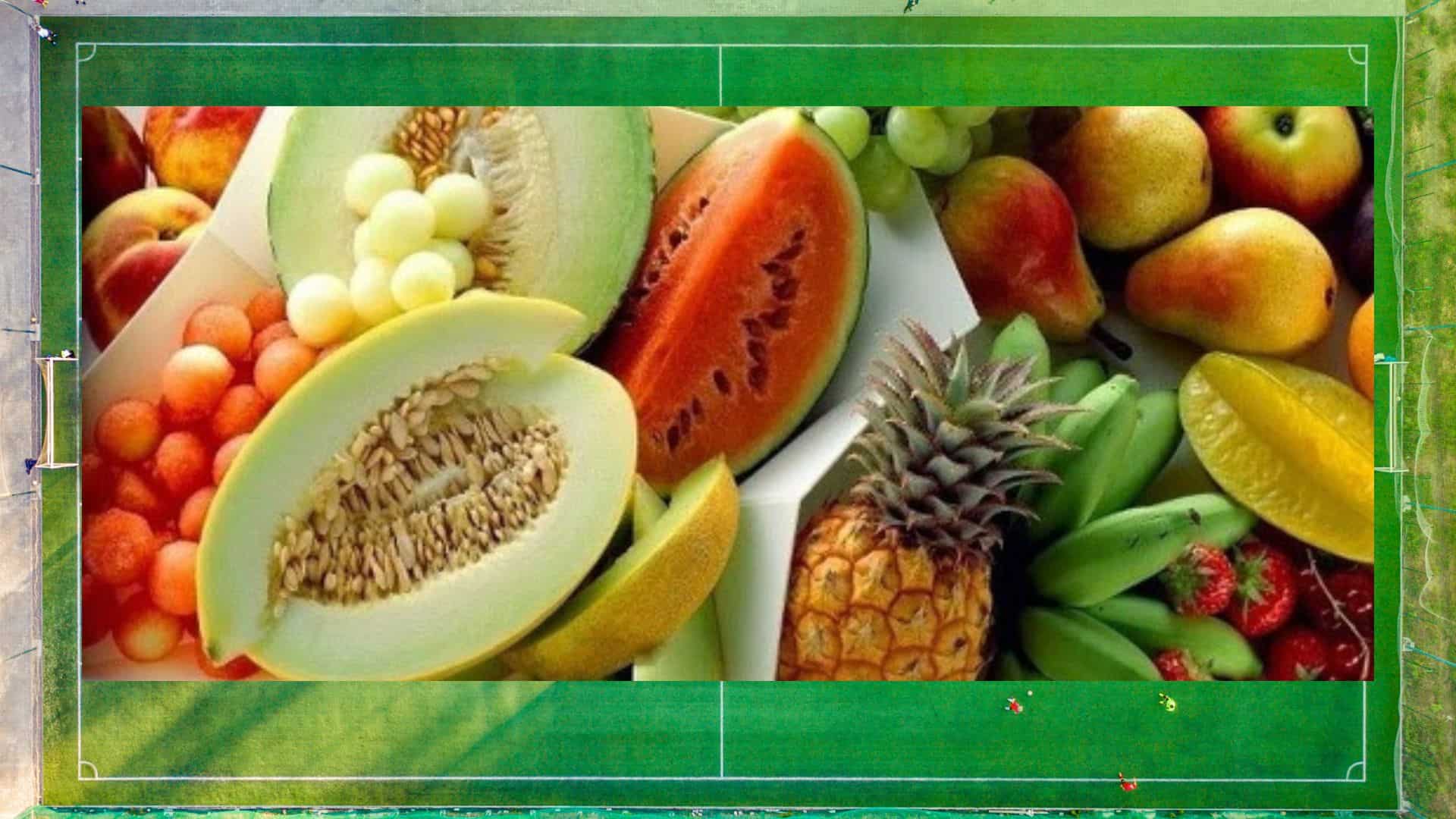Pakistan is blessed with a diverse climate that spans from tropical in the south to temperate in the north. This climatic diversity allows the country to produce a wide variety of fruits throughout the year. From the scorching plains of Sindh to the lush valleys of Kashmir, each region has its own unique set of seasonal fruits that not only delight the taste buds but also offer a plethora of health benefits. Below we describe Seasonal Fruits in Pakistan & Their Benefits.
Spring Fruits
1. Strawberries (March to May): As winter gives way to spring, Pakistan’s strawberry fields burst into a riot of red. These juicy, heart-shaped berries are not only a delight to eat but are also packed with vitamin C, fibre, and antioxidants.
- Qualities: Juicy, heart-shaped, red berries with a sweet-tart flavor.
- Benefits: Rich in vitamin C, antioxidants, and dietary fibre. Promotes skin health, boosts immunity, and aids digestion.
2. Cherries (March to April): Cherries make a brief appearance during spring, especially in the northern regions like Gilgit-Baltistan. They are rich in vitamins A and C, as well as antioxidants.
- Qualities: Small, round, red or dark purple fruits with a sweet and slightly tart taste.
- Benefits: High in vitamins A and C, antioxidants, and anti-inflammatory properties. Supports heart health and reduces muscle soreness.
3. Apricots (April to June): Apricots, with their sweet and slightly tart flavour, are abundant during spring. They are an excellent source of vitamin A, potassium, and dietary fibre.
- Qualities: Small, orange fruits with a sweet and slightly tangy flavour.
- Benefits: Excellent source of vitamin A, potassium, and dietary fibre. Supports eye health, aids digestion, and promotes skin health.
Summer Fruits
1. Mangoes (April to August): Known as the “king of fruits,” mangoes are the crown jewel of Pakistani summers. Varieties like Sindhri, Chaunsa, and Anwar Ratol are famous for their unique flavors. Mangoes are rich in vitamins A and C, and they provide a refreshing way to beat the summer heat.
- Qualities: Large, yellow or greenish fruit with a sweet, tropical flavour.
- Benefits: Rich in vitamins A and C, antioxidants, and dietary fibre. Supports eye health, boosts immunity, and aids digestion.
2. Lychee (May to July): Lychees, with their fragrant, sweet flesh, are a summer treat in Pakistan. They are a good source of vitamin C and potassium.
- Qualities: Small, round fruits with fragrant, sweet flesh and a rough, reddish shell.
- Benefits: Good source of vitamin C and potassium. Provides hydration, supports skin health, and aids digestion.
3. Watermelons (May to September): Watermelons are a staple during scorching summers. They are not only hydrating but also low in calories, making them a popular choice for combating heat.
- Qualities: Large, green-skinned fruits with juicy, red or pink flesh.
- Benefits: Hydrating and low in calories. Rich in vitamins A and C, supports hydration, and helps cool the body in hot weather.
4. Guavas (April to September): Guavas are available throughout the summer and are a rich source of vitamin C, fibre, and essential minerals.
- Qualities: Round or pear-shaped fruits with green or yellow skin and pink or white flesh.
- Benefits: High in vitamin C, dietary fibre, and essential minerals. Boosts immunity, aids digestion and supports skin health.
Monsoon Fruits
1. Figs (July to September): Monsoon brings figs, which are not only delicious but also high in fibre, vitamins, and minerals.
- Qualities: Small, pear-shaped fruits with sweet and chewy flesh.
- Benefits: High in fibre, vitamins, and minerals. Supports digestive health, helps manage weight, and promotes heart health.
2. Plums (July to September): Plums are abundant during the monsoon season and are known for their sweet-tart flavour. They are a good source of vitamins A and K.
- Qualities: Small, round fruits with a sweet-tart flavour and smooth skin.
- Benefits: Rich in vitamins A and K, antioxidants, and dietary fibre. Aids digestion and supports bone health.
3. Peaches (July to September): Peaches ripen in the monsoon season and are rich in vitamins A and C, as well as dietary fibre.
- Qualities: Round fruits with fuzzy skin and sweet, juicy flesh.
- Benefits: High in vitamins A and C, dietary fibre, and antioxidants. Supports skin health and aids digestion.
Autumn Fruits
1. Pomegranates (September to November): Pomegranates, with their jewel-like arils, are a symbol of autumn in Pakistan. They are packed with antioxidants, vitamins C and K, and are known for their numerous health benefits.
- Qualities: Round fruits with red or pink arils and a sweet-tart flavour.
- Benefits: Packed with antioxidants, vitamin C, and vitamin K. Supports heart health, may reduce cancer risk, and promotes skin health.
2. Grapes (August to November): Grapes are available in a variety of colours and flavours during the autumn season. They are a good source of vitamins C and K, as well as antioxidants.
- Qualities: Small, round fruits in various colours with a sweet taste.
- Benefits: High in vitamins C and K, antioxidants, and dietary fibre. Supports heart health and may improve cognitive function.
3. Apples (September to November): Apples of various varieties thrive in the cooler autumn climate of northern Pakistan. They are rich in fibre and vitamin C.
- Qualities: Round or oblong fruits with various colours and a sweet-tart taste.
- Benefits: Rich in dietary fibre, vitamin C, and antioxidants. Supports heart health, aids digestion, and may help manage weight.
Winter Fruits
1. Oranges (November to March): Oranges, particularly from Sargodha and Tando Allahyar, are a winter staple. They are a great source of vitamin C and provide a boost to the immune system.
- Qualities: Round, orange fruits with juicy, segmented flesh.
- Benefits: Excellent source of vitamin C, antioxidants, and dietary fibre. Boosts immunity, supports skin health, and aids digestion.
2. Kinnows (December to February): Kinnows, a hybrid citrus fruit, are widely enjoyed in winter. They are rich in vitamin C and are known for their tangy-sweet taste.
- Qualities: Citrus fruits are similar to oranges with a tangy-sweet taste.
- Benefits: High in vitamin C, antioxidants, and dietary fibre. Boosts immunity and aids digestion.
3. Dates (December to February): Dates, especially from the Khairpur region, are nutritious winter snacks. They are high in energy, fibre, and essential minerals.
- Qualities: Small, elongated fruits with a sweet, caramel-like flavour.
- Benefits: Energy-rich, high in dietary fibre, and essential minerals. Provides quick energy, aids digestion, and supports bone health.

